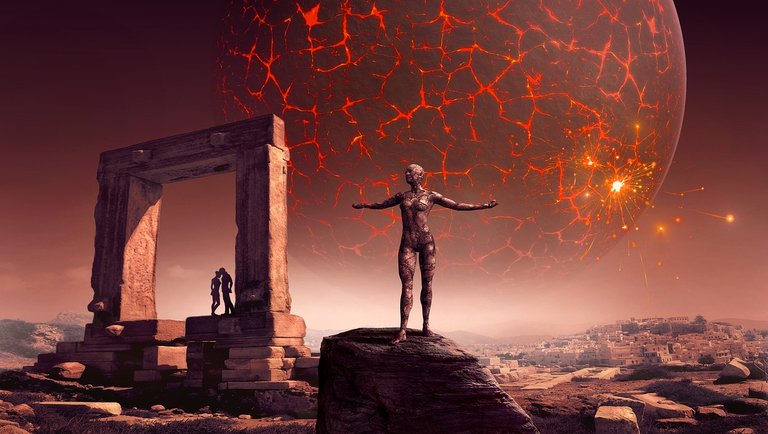This third part summarizes the phase that is undoubtedly the most dynamic and longest phase of Mars transformation. Indeed, the melting of water and the rise in temperature will completely disrupt Martian activity and change its cycles considerably.

The quest for water is a long natural process and a series of chemical reactions that follow one another. The increase in the greenhouse effect will lead to a thickening of the atmospheric layer of Mars, clouds of water vapour and CO2 will form, the latter will contribute to the increase of the greenhouse effect and thus to a further rise in temperatures. These various factors then cause a very strong increase in atmospheric pressure. It can finally rain on Mars. Rain and melting ice caps will create the oceans, seas, lakes and rivers that will flow through the Martian canyons. Hey, what's going on? The planet Mars is covered with thick white clouds, a sign of the heavy precipitation that is occurring. The atmospheric pressure continues to increase, the Martian atmosphere becomes increasingly dense and larger. From 400 to 600 years, the planet Mars will experience only rainfall and melting of water (liquid state solid state). This is exactly the opposite process that happened on our planet 4 billion years ago. The image of the red planet we once had is now a distant memory. Although Mars is currently completely oxygen-free, the oceans that dominate the northern hemisphere and the inland seas visible in the southern hemisphere are giving a new glimpse of Mars: a blue planet. The man can finally walk on Mars without a suit, but must be equipped with oxygen tanks. This is the third stage which will testify to the development of the very first Martian lives and to do so, man must once again intervene to accelerate the process of "biologization" or"oxygenation" of Mars.
What of the possibility of people living under thick ice sheets - as a way to shield them from some of the radiation? You think it's feasible?